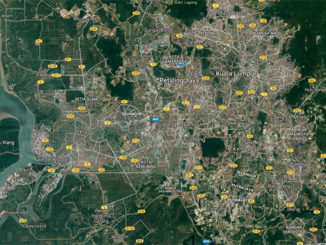
As a profession, landscape architects often proclaim we are conserving and preserving nature and that we seek to design, and nurture built and natural environments. We advocate for green/blue infrastructure, ecology, biodiversity, urban forests and use research studies to convince stakeholders to plant trees, build rain gardens and create socially just landscapes that provide for all members of the community. However, I feel a rising disquiet from the profession and communities that maybe we have lost our way. Over the past few decades, but even more so in recent times, we have increasingly designed and built project that are high intensity landscapes.
We have seen the rise of large-scale man-made islands, parks on bridges, intense vertical landscapes, all requiring large amounts of energy and human intervention to make them survive and thrive. These landscapes are often for a select few and unsustainable in the long term. As landscape architects, we convince ourselves that these landscapes contribute to the environment. They provide green landscapes, mitigating one or more ailments afflicting our cities, but are usually only for a select few. Are these landscapes truly sustainable? Do they contribute to the environment? Have we gone too far?
Asking ourselves if the project we are designing contributes to the world, or if we are simply creating further wealth for our clients, whose interests aren’t often ‘innovative’ or much more than an instagrammable moment, is crucial to progress. Should we instead be seeking to challenge the client’s brief and ideas to create landscapes that are economically, socially, and most of all environmentally sustainable? It is an ethical conundrum facing many landscape architects and their firms, which isn’t easily answered due to the need for financial compensation for our work.
During the pandemic, many of us had time to stop and review our professions changing role in the world as we move into the “new normal”. Numerous recent articles have proposed reconfiguring streets, creating more space for people, however I have not been inspired by these designs, but sadly unmoved. Most of these proposals are merely an array of bright coloured roads and urban street furniture along with privatising more public space by extending restaurants and retail onto streets and plazas. Though we often advocate for natural environments in the urban fabric to our stakeholders and city governments, we seem to be incapable of capitalising on our skills to create these landscapes. We should aim to provide spaces allowing people to relax, unwind and reconnect with nature. Not all spaces need to “activated” or create buzz in a world where we are constantly bombarded with overbearing light, colour and screens.
It may be said that WLA is promoting these designs, countering my argument. However, by publishing these projects WLA provides an opportunity for landscape architects and firms to review and critique the design, determining if they match the ideals that landscape architects espouse. Many have written to me to encourage greater critiquing of published projects; however, I lack the time and resources to defend against possible litigation. It could be said the increase in unwieldy design is attributed to the slow decline of published design critiques.
Landscape architects need to return to simple ideals to tackle the growing issues facing our communities, cities, countries, and the world. I implore the landscape architecture profession to take up the challenge, to critique your designs and assess whether each decision you have made aligns with the ideals that you as a landscape architect espouse.
Have we gone too far? written by Damian Holmes – Editor of World Landscape Architecture and registered landscape architect working in Melbourne, Australia.
DISCLAIMER:
The opinions expressed in this article are those of the author. They do not purport to reflect the opinions or views of my employer or any organisation that may be affiliated with the author.
This article is for educational purposes only. The content is intended only to provide a summary and general overview on matters of interest. It’s not intended to be comprehensive, nor to constitute advice. You should always obtain professional or legal advice, appropriate to your own circumstances, before acting or relying on any of the above content.



